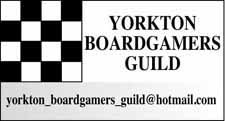The Duke is a 2013 board game release, and it is one fans of head-to-head gaming will want to seek out.
In fact of you like games where chess has been an obvious influence, but still have its own fresh take on how such a game should play out, then just forget reading this and go buy The Duke. You will not be disappointed.
The games comes to us from designers Jeremy Holcomb and Stephen McLaughlin. They have created something rather special in terms of gaming, although they do borrow most concepts from other games.
That is not meant as a knock on The Duke. Many great things in our world are the result of taking bits and pieces of other things and making them work. The wheel and motor came long before the car, yet the car is a marvellous creation in its own right too.
As mentioned, you will immediately think chess with The Duke. It is after all a two-player game with players moving their armies (pieces) on a grid board.
But perhaps more truthfully The Duke has a Shogi-look. The game uses flat wooden pieces inscribed with piece details. In that regard it looks much like the Japanese vein of chess.
This game is also highly reminiscent of Navia Drapt, a 2004 release from Bandai. The game, one of my all time favourites suffered badly from near unpronounceable piece names, and a dislike by many board gamers of the random distribution of non-core pieces in expansion packs.
But Navia Drapt (reviewed here in 2008) offered many amazing elements to what is also very much a Shogi-influenced chess-like game. One of the great things in Navia is that pieces 'morph' during play. A piece starts a game with a particular movement. When a certain trigger occurs the piece gains a different movement pattern. It is a mechanic which can change the tide of a game, and one where players need to be aware of what might happen if they can get a piece to flip, or if their opponent does the same.
The Duke uses the same general idea. On one side of the nicely made, wooden pieces (always a plus), the actual movement pattern is seen.
Again when a trigger occurs, the pieces in The Duke flip, and there is a different movement pattern.
In The Duke the flip trigger is simple. Move a piece and it flips. Move it again and it flips once more..
The game starts with only three pieces per player on the board, The Duke and two footman. These pieces have some flexibility in initial positioning, but must be in contact with one another.
The rest of a player's pieces go into a bag. This is where the game diverges from being a perfect information abstract strategy game like chess. When adding a piece to the board you randomly draw one from the bag. You then place it on the game board in an unoccupied square sharing a side with the square occupied by the player's Duke.
You can pull and place a piece on your turn, or you may opt to move a piece already on the board, or a third option is to use an enhanced ability which is detailed on some pieces in the game.
The uncertainty of what piece you might pull may not be appreciated by the chess purist, but it does mean adapting strategy on the fly as you have to work with whatever you grab.
The basic rule set for The Duke is well-laid out, and includes alternative objectives for winning a game. This is a huge bonus for the game since it will forever keep play fresh.
And there is more to make The Duke a truly amazing game.
The basic game comes with a mountain tile, a piece which is placed and then impedes movement through that square. Simple, yet a highly effective way to alter game play.
There is also a blank tile included for each player to allow you to be creative and design your own piece.
Of course if you aren't into being that creative, there are various expansion packs of pieces coming down the production line for The Duke, and there are some great ones too. The expansions are all themed, and those themes take in some of the best books from the era of swords and chivalry.
Just buy this one and enjoy.
Check out the game at www.catalystgamelabs.com
If anyone is interested feel free to contact [email protected]




